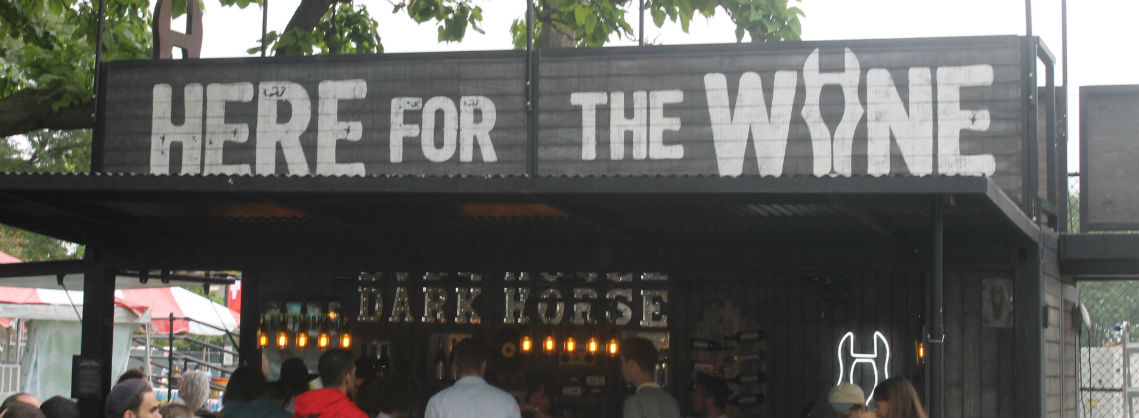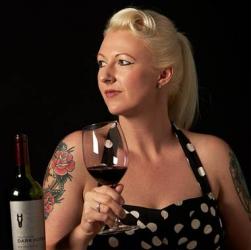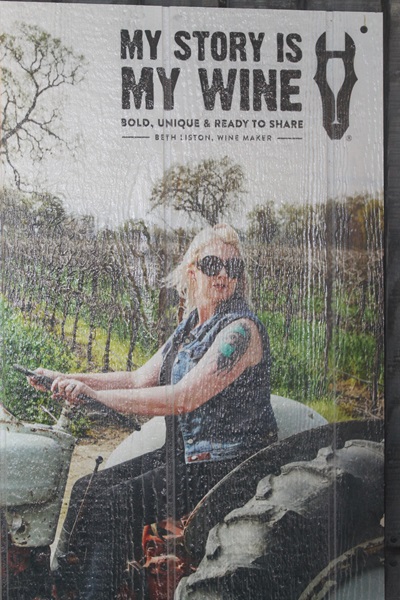Catching Up with Dark Horse Winemaker Beth Liston
Jul. 28, 2016

If there is one thing that Dark Horse Winemaker Beth Liston knows about millennial wine drinkers, it’s that they love to experiment with new, exciting options.
 “You can try new stuff and millennials are totally game for it,” said Liston.
“You can try new stuff and millennials are totally game for it,” said Liston.
As the architect behind Dark Horse’s impressive lineup of wines, Liston is tasked with using innovative methods to produce a value wine that tastes anything but value. Dark Horse wine has found a way to marry two very important aspects of many millennial consumers, which is that they appreciate quality and they are a savvy spenders. While they are willing and able to pay a premium for a product they love, they’re smart enough to recognize a deal when they find one. This puts Dark Horse in prime position to be a go-to drink for the world’s most powerful buying demographic.*
We recently sat down with Liston at the Pitchfork Music Festival – a millennial-consumer hotbed – to get her insights on a variety of trending topics in the wine industry
Breakthru: You’re well-known for crafting Dark Horse, which costs less than $10 a bottle, into a wine that resembles something far more expensive. Describe your methods in how you turn a value bottle into a higher end flavor.
Beth Liston: It really comes down to using techniques that’s typically reserved for production of higher end wines, including the aging process and where the fruit is sourced. Winemaking always starts in the vineyard so it’s all about fruit quality. We spend a lot of time with our growers to make sure we have good quality fruit coming into the winery. Blending is key – that’s where the artistry in winemaking comes in. I like taking a lot of those esoteric grape varietals people haven’t really heard of and putting them together to make a Cabernet taste even better.
 Tell us about how you got into the wine industry?
Tell us about how you got into the wine industry?
I grew up on the Central Coast surrounded by wineries. I began working in a tasting room when I turned 21 and just fell in love with the art and science of winemaking.
Who has been your biggest influence?
My biggest influence was my dad. He absolutely loved his job and loved going to work every day. That was a driving force for me because at one point I was working in sales and was miserable. I decided to go back to school to learn how to become a winemaker. Seeing the love he had for his job drove me to find that same passion.
What are some of your favorite esoteric varietals at the moment?
My favorite grape right now is Dornfelder, which is a German red typically grown in cool climates. We’re actually growing it in central California right now which is not a cool region, so we’re really managing it well in the vineyards. We’re able to get incredible colors without the tannins or the stringency.
What’s the biggest challenge you’re currently facing as a winemaker today?
It’s breaking through the perception that you can have a high quality wine for $8. For a long time, people have thought that anything under $10 is of low quality. We just need to keep getting our wine in front of people and have them taste what we have to change the perception.
As someone who is as deeply ingrained in the wine industry as you are, what are some interesting trends that you’ve seen over the last year?
The rise of rosé is the biggest trend. In addition we’re seeing a lot of growth in sparkling wines which is really exciting. It’s becoming more of an everyday drink as opposed to being used exclusively for special occasions.
The industry is reporting constantly on the impact of the millennial consumer on the marketplace. What’s your take on how they are shaping the wine industry?
As a winemaker, I believe millennials have made the wine industry a lot more fun. They have no preconceived notions about wine so anything goes. They don’t care if the wine is from California, so it allows me to source fruit from everywhere. There are no rules which makes it fun for winemakers.
Finally, do you have any predictions or insights on what we might be seeing in the wine industry for the rest of 2016?
I think we’re going to continue to see a lot more growth in alternative packaging – cans, boxes. There’s a lot of growth to be had in that segment because there’s so many benefits to having that new packaging. I think we’ll continue to see more growth in rosé and sparkling wines.
*Millennial Drinking Habits - http://aplus.com/a/millennial-drinking-habits